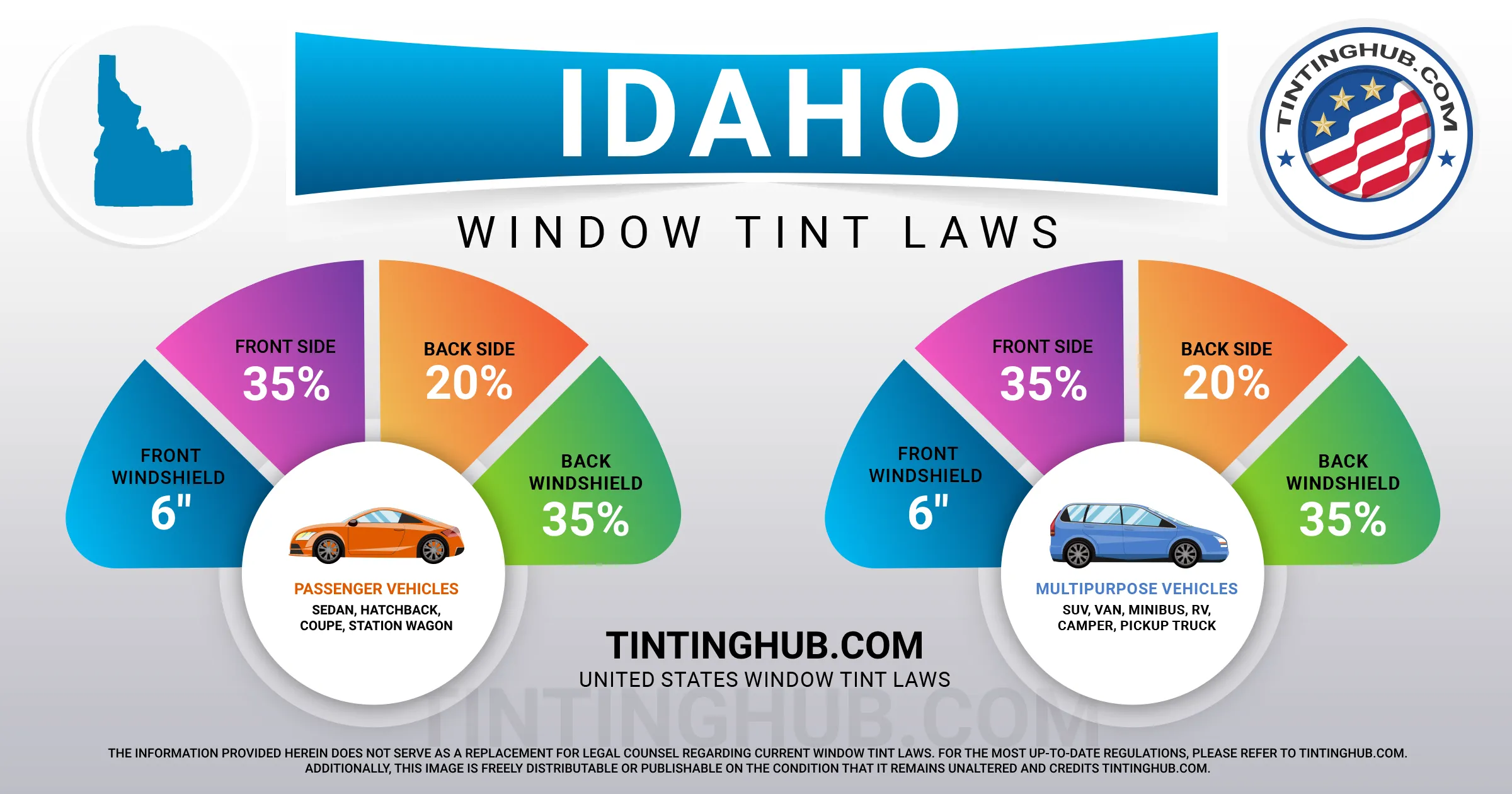Idaho Window Tint Laws (Last Update 2024)

If you’re a car owner in Idaho, it’s essential to be well-informed about the state’s car window tinting laws. These regulations, implemented in 1992, outline specific guidelines regarding the darkness and reflectivity of window tints. In this comprehensive guide, we will provide you with all the necessary information to ensure you stay on the right side of the law.

Idaho Window Tint Darkness Regulations
The darkness of your window tint is measured in terms of Visible Light Transmission (VLT). Different regulations apply to sedan cars and SUVs or vans, so it’s crucial to be aware of these distinctions.
Sedans:
- Windshield: Non-reflective tint is allowed above the manufacturer’s AS-1 line or the top 6 inches.
- Front Side Windows: Must allow more than 35% of light in.
- Back Side Windows: Must allow more than 20% of light in.
- Rear Window: Must allow more than 35% of light in.
SUVs and Vans:
- Windshield: Non-reflective tint is allowed above the manufacturer’s AS-1 line or the top 6 inches.
- Front Side Windows: Must allow more than 35% of light in.
- Back Side Windows: Must allow more than 20% of light in.
- Rear Window: Must allow more than 35% of light in.
Window Tint Reflection in Idaho
Window tints can reduce glare and heat by reflecting incoming light. Idaho law specifies limitations on the level of reflection allowed:
Sedans:
- Front Side Windows: Must not be more than 35% reflective.
- Back Side Windows: Must not be more than 35% reflective.
SUVs and Vans:
- Front Side Windows: Must not be more than 35% reflective.
- Back Side Windows: Must not be more than 35% reflective.
Additional Idaho Window Tint Rules
In addition to darkness and reflection, Idaho has several other essential laws and regulations related to window tinting, including:
- Side Mirrors: Dual side mirrors are required if the back window is tinted.
- Restricted Colors: There are no specified banned tint colors.
- Tint Variance: State laws allow a 3% light transmission tolerance.
- Certificates: Film manufacturers are not required to certify the film they sell in this state.
- Stickers: There is no requirement for a sticker to identify legal tinting.
- Medical Exceptions: Idaho allows medical exemptions for special tint, with 75% VLT on the windshield and 20% VLT on other windows.
Penalties
Failure to comply with these regulations can result in a traffic infraction. It’s important to note that Idaho’s tinting laws and regulations may be interpreted differently in your county or place of residence. Therefore, we recommend double-checking this information with your local DMV or law enforcement authorities.
Stay Updated
Our information about window tint laws in Idaho was last updated in 2023. If you come across any outdated or incorrect information, please don’t hesitate to contact us so we can rectify it. We take pride in being a trusted industry leader, providing accurate and up-to-date information on window tint laws. Your compliance with these regulations not only ensures your safety on the road but also helps you maintain your vehicle’s aesthetics and functionality.